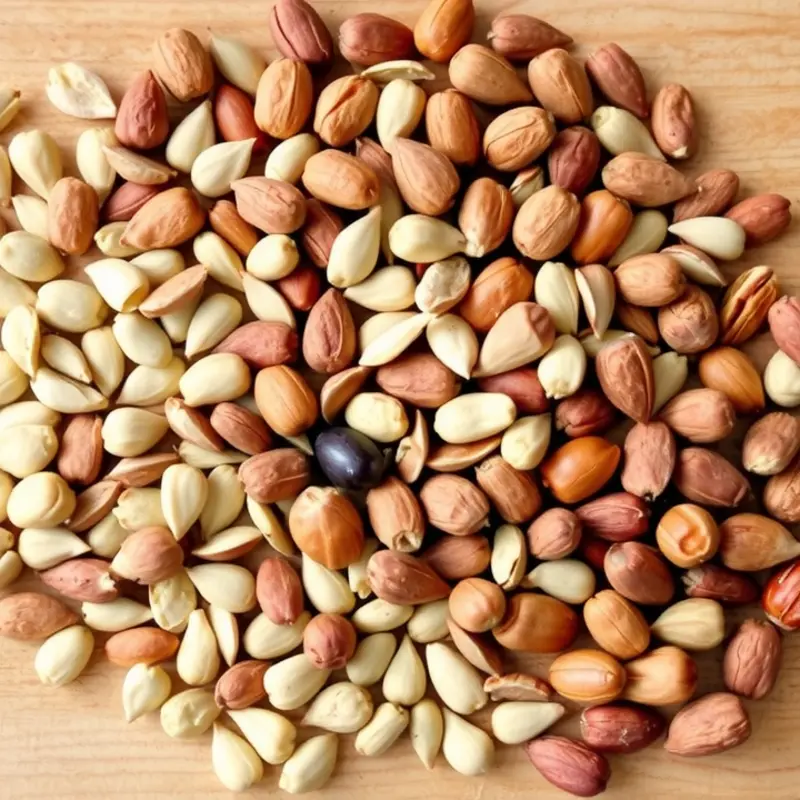When oats aren’t on the menu, various alternatives can keep your meals wholesome and satisfying. Whether due to dietary restrictions or personal preference, having quick substitutes can enhance your cooking flexibility. This guide offers easy alternatives to oats, detailing how to use them in everyday dishes while maintaining flavor and nutrition.
Ample Grain Alternatives

When you run out of oats or simply want a change, there are a variety of grains that can easily step in. These grains offer unique textures, flavors, and nutritional benefits, making them excellent substitutes in many recipes.
Quinoa is a beloved option due to its rich protein profile. It’s a complete protein, meaning it contains all nine essential amino acids. Quinoa can replace oats in porridge by cooking in a similar manner. Use a 2:1 water-to-quinoa ratio, bring to a boil, then reduce to a simmer for about 15 minutes. It fluffs up beautifully and provides a slightly nutty flavor that complements both sweet and savory dishes.
Amaranth is another protein-rich choice, notable for its slightly sticky texture when cooked, making it ideal for porridge-like dishes. Simply boil amaranth with water or milk, maintaining a 1:3 grain-to-liquid ratio, for about 20 minutes. Its nutty and earthy taste pairs well with fruits and spices like cinnamon.
For a chewy texture and a touch of sweetness, barley can serve as an excellent oat alternative. Barley is high in fiber and can be incorporated into breakfast bowls or baked goods. To cook barley, use a 2.5:1 liquid-to-barley ratio and simmer until tender, about 25-30 minutes.
Millet is a versatile grain, boasting a mild flavor and a slight crunch when toasted. To prepare, rinse the millet, then toast it in a dry pan before boiling it in water with a 2.5:1 water-to-millet ratio for about 20 minutes. Groats, a form of hulled grain including buckwheat, are another valuable oat substitute. Buckwheat groats, despite their name, are gluten-free and offer a hearty texture and nutty flavor, perfect for pilafs or granola. Cook buckwheat groats using a 2:1 water-to-groats ratio, simmering for about 15 minutes.
Teff, a staple grain in Ethiopian cuisine, is known for its tiny seed size yet impressive nutritional content. Rich in iron and calcium, teff can be used to create a creamy porridge with a 4:1 water ratio, cooked for about 20 minutes. Alternatively, it acts as a nutrient boost in baking recipes.
Exploring these grains not only provides a nutritional edge but also brings diverse culinary experiences to your kitchen. As you experiment, you’ll discover that each grain has its own charm, transforming ordinary recipes into something new and exciting.
For more ideas on enhancing the flavor and texture of these grains without using direct salt, you might find this guide on flavor boosters useful. Creating unique meals doesn’t need to start with just oats—these grains ensure a variety of delicious and nutritious options.
Nutty and Seed-Based Options

For those seeking oat alternatives with both texture and nutrition, look no further than nuts and seeds. These powerhouses bring more than just their distinctive crunch to the table; they are rich in healthy fats, proteins, and a host of vitamins and minerals. Incorporating nuts or seeds can transform your regular recipes into nutrient-dense delights worthy of any meal.
Nut Options:
Almonds, walnuts, and pecans top the list of nut choices. When ground into a fine meal, almonds can substitute oats in muffins or pancakes, lending a subtle sweetness. For a heartier texture, coarsely chopped walnuts or pecans can be added to your morning cereal or yogurt. Each variety offers different nutrients: almonds are high in vitamin E, while walnuts provide a robust amount of omega-3 fatty acids.
To use almonds as a direct swap for oats in baked goods, consider a ratio of one-to-one. Their naturally mild flavor complements most recipes without overpowering other ingredients. When baking, remember to adjust any liquids in your recipe slightly, as nuts will not absorb as much moisture as oats.
Seed Alternatives:
Seeds like chia, flax, and sunflower seeds are excellent oat alternatives, especially for those looking to boost their omega-3 intake and fiber content. Chia seeds can be left whole or ground and are ideal for thickening puddings or as a crunchy topping on smoothies. When soaked, chia seeds transform into a gel-like consistency, which works well for overnight ‘oat’ dishes.
Flaxseeds need to be ground to unlock their nutritional potential. Once ground, they provide a nutty flavor and act as an excellent binder in recipes. Whole flaxseeds can also add a delightful crunch to salads or baked treats; however, they must be ground if you wish to tap into their omega-3 benefits fully. Replace every cup of oats with 3/4 cup of ground flax in your recipes.
Sunflower seeds, while often enjoyed by the handful, can be a robust substitute in breakfast bars and granolas. They provide an unexpected textual variety and a slightly earthy taste. If used in large quantities, their oil may add extra moisture, so adjust other liquids accordingly.
Practical Application:
Creating a balanced dish is more than substituting oats with nuts or seeds. It involves a mindful assessment of flavors and textures to ensure a harmonious blend, as explained in detail in the Mindful Eating guide. Experiment with adding a blend of different nuts and seeds to achieve your desired flavor profile.
Whether for breakfast, a midday snack, or dessert, nuts and seeds provide versatile and nutritional options that keep meals exciting and nutritious. By exploring these alternatives, you can enjoy the same satisfaction oats offer, with the bonus of diverse flavors and enhanced nutritional benefits.
Final words
Incorporating oat alternatives can bring variety and nutritional benefits to your cooking. Ample grain options add texture and flavor, while options like nuts and seeds provide healthy fats and proteins, perfect for balancing your meals. By embracing these substitutes, home cooks and health-conscious individuals can easily adapt their favorite dishes to meet dietary needs without compromising satisfaction. Start experimenting today to discover your new favorite ingredient—and elevate your culinary repertoire with ease!







